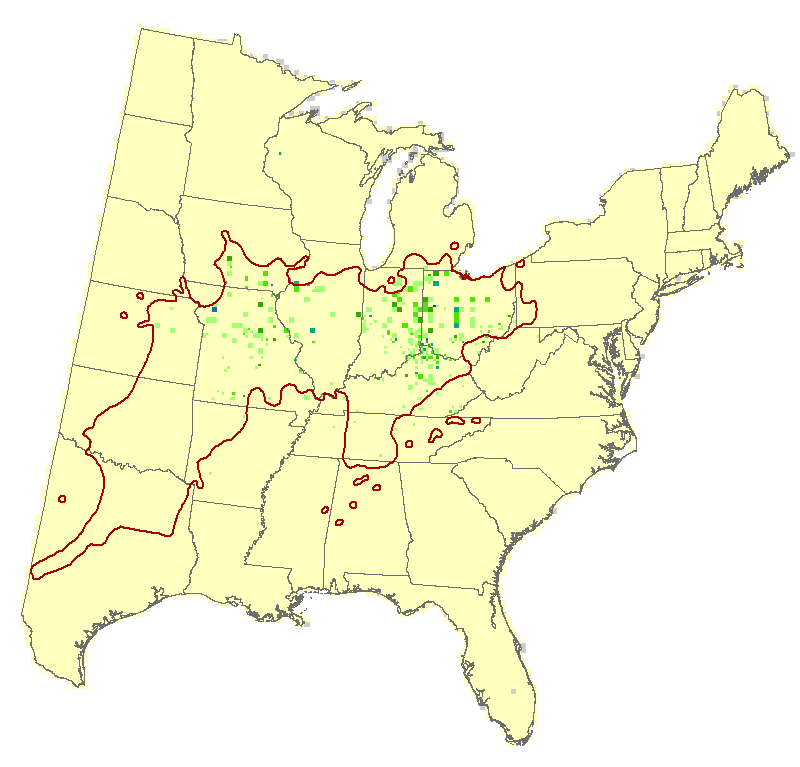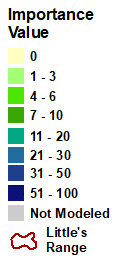Ohio buckeye (Aesculus glabra)
Model Reliability: Low
| GCM SCENARIO | % Area Occ | Ave IV | Sum IV | Future/Current IV |
|---|---|---|---|---|
| Actual | 1 | 3.3 | 999 | N/A |
| RFimp | 1.2 | 1.5 | 540 | 0.54 |
| CCSM45 | 1.2 | 1.2 | 416 | 0.77 |
| CCSM85 | 1 | 1.1 | 349 | 0.65 |
| GFDL45 | 1.2 | 1.1 | 391 | 0.72 |
| GFDL85 | 1.1 | 1.2 | 367 | 0.68 |
| HAD45 | 1 | 1.2 | 351 | 0.65 |
| HAD85 | 0.9 | 1.2 | 323 | 0.6 |
| GCM45 | 1.4 | 0.9 | 386 | 0.72 |
| GCM85 | 1.2 | 1 | 346 | 0.64 |
Regional Summary Tree Tables
Summaries for tree species are available for a variety of geographies, in both PDF and Excel format. These summaries are based on Version 4 of the Climate Change Tree Atlas
Interpretation Guide
Ohio buckeye is narrowly distributed (1.5% of area), sparse, and low IV species centered in the central states from Missouri to Ohio. The poorly reliable model shows a decrease in habitat but fairly stable in Ohio and Indiana. Though moderately adaptable, its projected decline and low abundance yields a very poor rating for capacity to cope. SHIFT shows some minor infill.
Family: Hippocastanaceae
Guild: opportunistic, dispersal limited
Functional Lifeform: medium sized deciduous tree
| 3.5 | 0.38 |
| -1.92 |  |
MODFACs
What traits will impact Ohio buckeye's ability to adapt to climate change, and in what way?:
Primary Positive Traits
Shade tolerance
Primary Negative Traits
Seedling establishment Fire topkill



